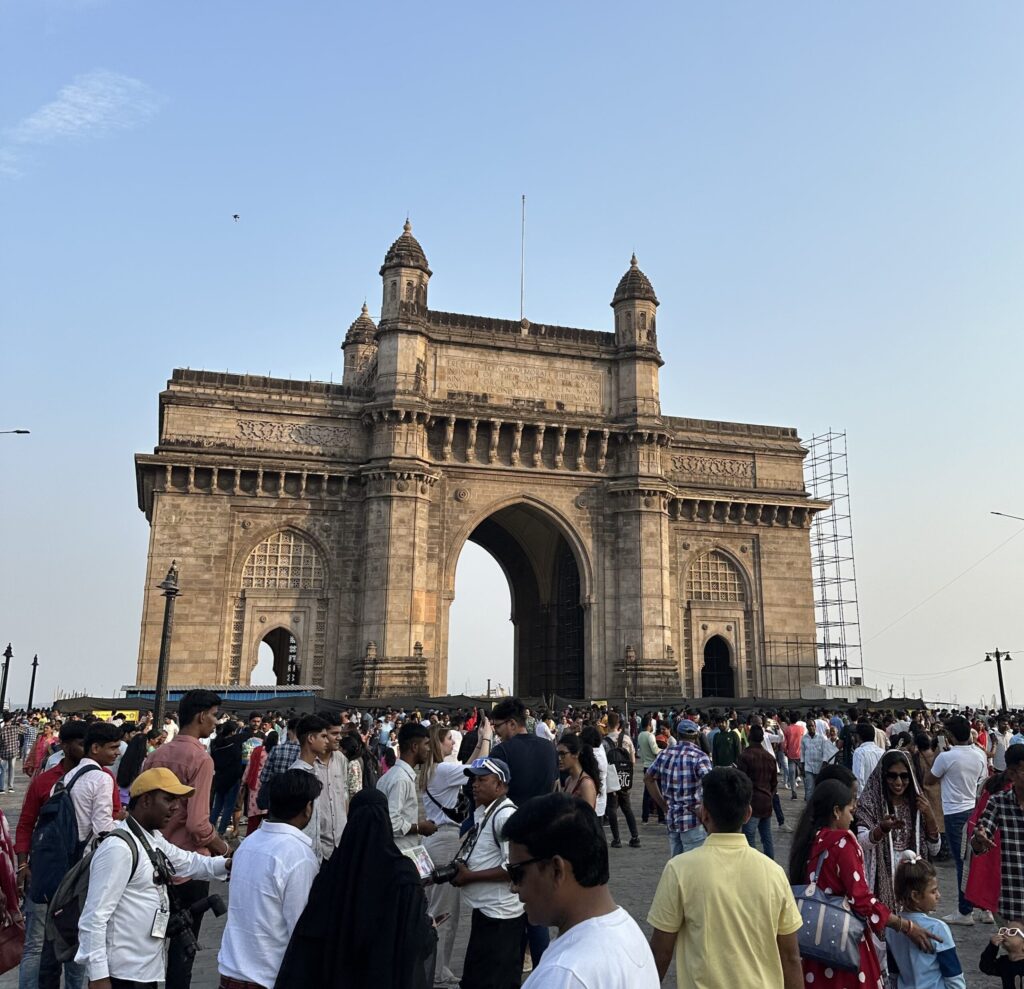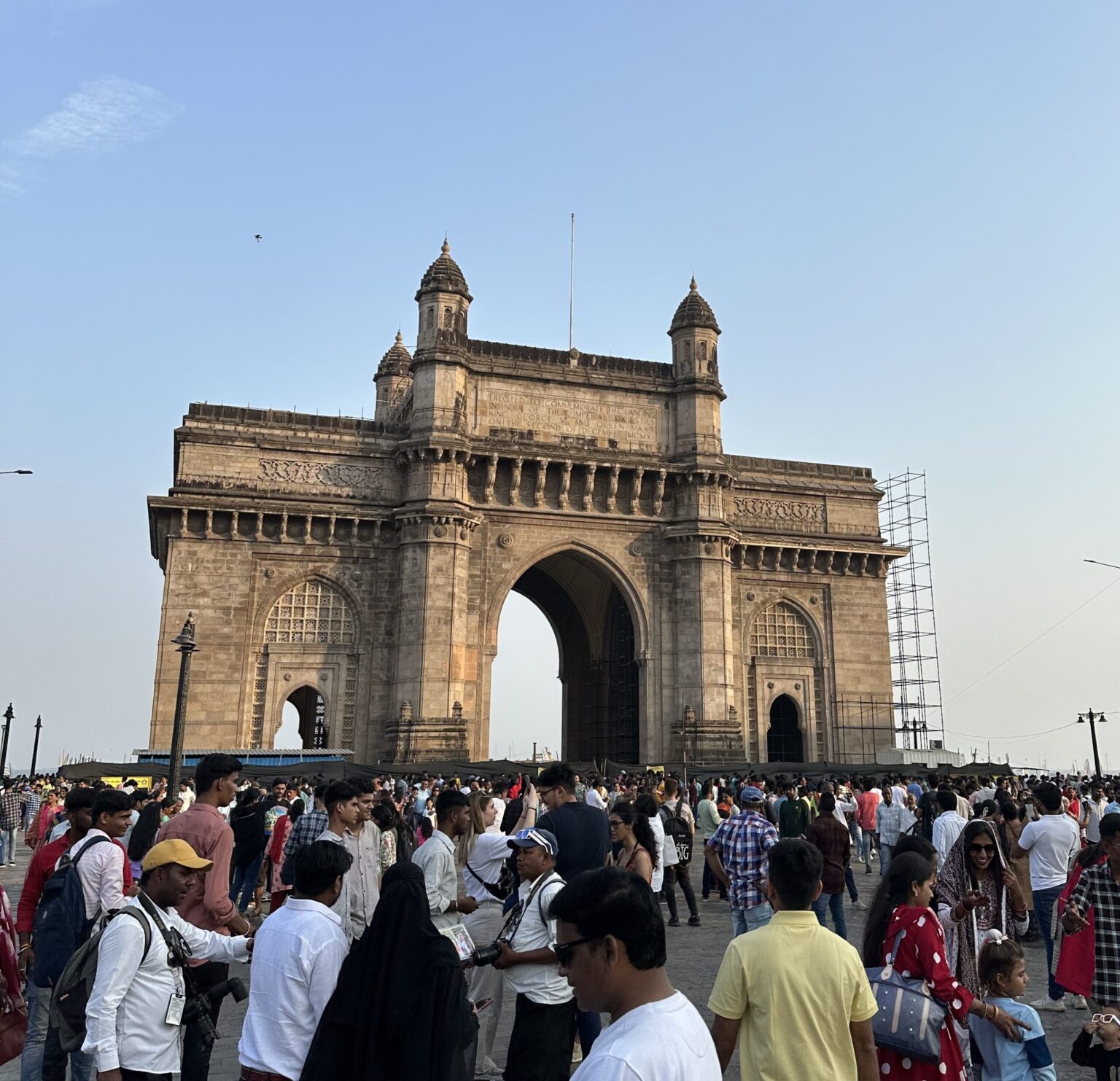Company Touch Tracker
This quarter our team engaged with 455 companies across the world, putting our trailing 12-month company touches at 1,707.
In Q2, team members traveled domestically to Massachusetts, Minnesota, Kentucky, Utah, California, and Florida. Internationally, team members traveled to Japan, India, Taiwan, China, Australia, UAE, Sweden, and the United Kingdom and interacted with companies in 32 other countries. We track these interactions and share them on our Company Touch Tracker1.
India Recap
Tyler Glauser, Joseph Nydegger, Matt Kaelberer, Nick Luong, and Rafael Seminaro, Research Analysts, traveled to India this quarter. Here are some of Tyler’s thoughts on their research trip:
Last month, I traveled to India for the third time in the last seven years. Accompanied by my colleagues, we spent two days in Mumbai and three in the Delhi area visiting a range of consumer-focused companies.

Having first visited India in 2018, then again in 2022, I can say without hesitation that each visit has revealed a striking “step-change” improvement—especially in infrastructure. The transformation is no longer incremental; it is exponential. Roads are better. Airports are more modern. Power outages—once a common frustration—have become rare. India today presents itself as a country in motion, one that is steadily shedding the inefficiencies of its past and embracing the momentum of growth.
India’s macro backdrop is encouraging. Real Gross Domestic Product (GDP2) growth remains healthy, while inflation—historically a challenge for the Indian economy—has eased in recent quarters. Confidence in the real estate market has returned, bolstered by increasing investments and improved buyer sentiment. Developers we spoke with noted that units are moving again, and pricing power has quietly re-emerged in certain metro corridors.
Consumer confidence, while debated in some circles, appears largely intact. Several company executives acknowledged some pockets of softness—particularly in discretionary spending—but framed it as a normalization rather than a downturn. One CEO shared an intriguing perspective: he believes domestic consumption is stronger than it looks in the data, but the growth is being masked. His reasoning? High hotel prices within India are encouraging affluent Indians to vacation abroad. So, while local hotel occupancy may be down, overall discretionary travel spending could still be robust—it is just happening outside India’s borders.
This trip reinforced a core belief we have held for years, that India has an enormous amount of headroom for growth. And that opportunity is especially pronounced in consumer sectors.
Consider the data:
- Sports and Athleisure Footwear: Still a nascent category compared to developed markets, with penetration levels well below global norms. Leading brands are seeing double-digit volume growth driven by young, aspirational consumers entering the workforce.
- Per Capita Biscuit Spending: A surprisingly low figure of 425 kg/year for a country with such a strong snacking culture, as compared to Japan, the UK and the US at 5x, 7x, and 10x India’s rate. One company noted that even small innovations in packaging (e.g., smaller, more affordable sachets) have been instrumental in driving rural sales.
- Out-of-Home Food Consumption: Perhaps the most dramatic illustration of India’s untapped potential. In the U.S., about 15 out of 21 weekly meal occasions occur outside the home. In Thailand, the number is 6. In India? Just 1 in 61—for the top 20% of the population. The implications for Quick Service Restaurant (QSR) chains, delivery platforms, and urban convenience food players are enormous.
- Consumer Durables and Household Penetration: India still trails significantly in product ownership across categories like air conditioners, washing machines, and microwaves. Yet these are the very categories where rising urban incomes and improved access to credit are starting to drive adoption.
Whichever metric you use, the story is the same: India isn’t just growing—it’s catching up. And that catch-up has a long runway ahead.
Beyond the consumer story, this visit made us more optimistic about India’s role on the global stage. Geopolitically, India occupies a rare, sweet spot. The country is friendly with the West—deepening its ties with the U.S. and Europe—while also maintaining robust trade relations with Russia. Despite persistent tensions with Pakistan, and a complex relationship with China, India manages to preserve diplomatic channels and economic activity across most of Asia.
An especially intriguing dynamic we discussed during our meetings is India’s internal religious-demographic shift. Currently, about 40% of the population is Muslim, and this segment is growing more rapidly—particularly in rural areas, where polygamy remains legally permissible among Muslim men. While this presents socio-political complexities, it also adds to India’s multifaceted identity. As global supply chains diversify away from China (“China + 1”), India stands out not just for its cost advantages and talent pool, but also for its ability to engage diplomatically with a wide range of partners. That could be a decisive edge in the turbulent decades ahead.

We came away from our meetings with a sense that we’re underweight Indian consumer companies across our strategies. The combination of improving infrastructure, favorable demographics, rising per capita income, and political stability makes the consumer space particularly compelling. While we will still need to balance regional exposure and valuations, we believe there are a number of names that could warrant more weight in our portfolios. India has felt overvalued for the last few years but has recently returned to a more fairly priced market in pockets.
Several companies we met with stood out not just for their growth trajectories, but for the quality of their management teams and the clarity of their execution. These are not speculative “future bets”—they are well-run businesses benefiting from secular tailwinds. Many of them are also focused on premiumization and market segmentation, two themes we believe will be critical as India’s middle class continues to expand.
As is true with all our research trips, we examine our portfolios to determine where we might find room to benefit, with our discoveries in mind. As for India, the thesis is clear: India is not just a structural story—it is an investable one today.
Returning to India is always enlightening. There is a certain vibrancy to the country—a mix of chaos and opportunity, legacy and modernity—that makes it unlike any other emerging market. What struck me most on this trip was how much of the upside is still ahead. For all the progress India has made, it remains a country in transition. But that transition is moving faster now. Infrastructure is catching up. Consumers are moving up. Policymaking is getting more pragmatic. And capital is flowing in.
We left feeling not only encouraged but energized. This is a story we want to be part of.
[1] Grandeur Peak Global Advisors – About Us – Global Footprint, https://grandeurpeakglobal.com/global-footprint/
[2] Gross Domestic Product (GDP) is a measure of the value of all goods and services of a country, including spending by consumers, governments, net exports and total investments, and can be used as a measure of a country’s economic health.
